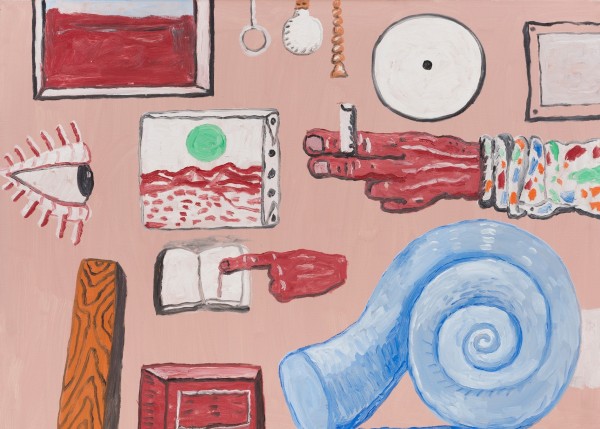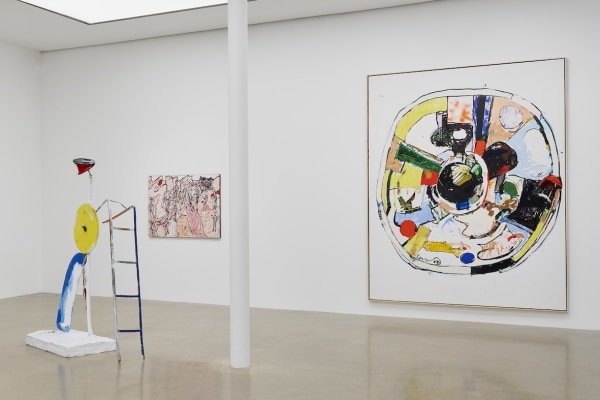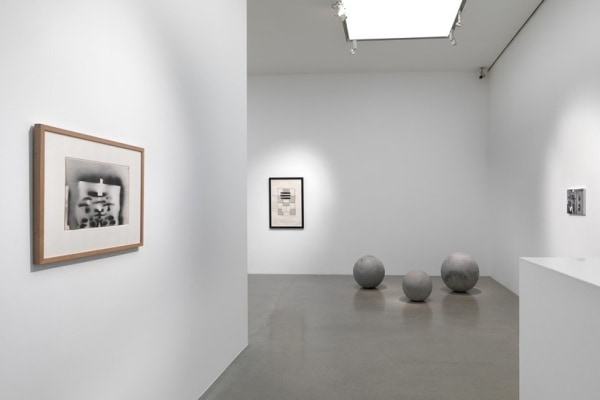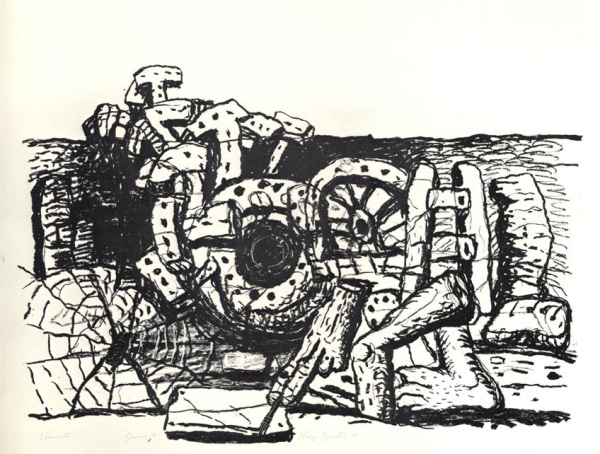Philip Guston
-
Exhibitions
-

A Thing for the Mind
7 July - 19 August 2022 LondonSix decades after Philip Guston (1913 – 1980) first shocked the art world, the sweeping ambition of his vision continues to reshape the realm of the possible for artists who have followed in his wake. His paintings blend a precise vocabulary of concerns then without precedent in American painting: mundane domestic objects, body parts and cityscapes within abstract fields of paint. As humorous and personal as they are politically incisive, his paintings draw a vivid picture of Guston’s own muddled dreamscape of fears and anxieties as well as of society’s worst impulses.View More -

Artful Living
Curated by Steven Gambrel 7 July - 30 August 2020 LondonTimothy Taylor is delighted to present Artful Living, curated by interior designer Steven Gambrel, who is known for creating sophisticated, spirited interiors that seamlessly blend contemporary and traditional art and design with vernacular architectural details.View More -

Philip Guston
The Last Lithographs 14 September - 3 November 2018 New YorkTimothy Taylor, New York is proud to present the complete collection of Philip Guston lithographs; 25 works created by the artist and published by Gemini G.E.L. in 1980, the year of his death.View More -

A New Way of Walking
29 June - 27 July 2018 New YorkFor the summer season, Timothy Taylor is pleased to announce the group exhibition A New Way of Walking, which brings together an eclectic mix of artists and works all united by an interest in the impact of the surrounding environment on the individual. In the 1950’s, the theorist Guy Debord defined the term psychogeography to represent enquiries into the impact of geographical location upon the emotions and behaviour of conscious beings.View More -

A New Way of Walking
7 June - 28 July 2018 LondonFor the summer season, Timothy Taylor is pleased to announce the group exhibition A New Way of Walking, which brings together an eclectic mix of artists and works all united by an interest in the impact of the surrounding environment on the individual. In the 1950’s, the theorist Guy Debord defined the term psychogeography to represent enquiries into the impact of geographical location upon the emotions and behaviour of conscious beings.View More -

Philip Guston
10 June - 11 July 2015 LondonTimothy Taylor is pleased to announce its fourth Philip Guston exhibition, which gathers together some of the artist’s finest paintings and drawings from the distinguished body of work made between 1969 and 1980, many of which have not been previously exhibited in Europe.View More -

B / W
1 - 31 May 2014 LondonVija Celmins, Adam Fuss, Philip Guston, Hans Hartung, Susan Hiller, Josephine Meckseper, Mai-Thu Perret, Sean Scully, Kiki Smith, Andy WarholView More
B/W brings together a group of works that share the simple formal relationship of being without colour. Spanning a broad range of artists, both in generation and artistic concern, the exhibition is arranged in the gallery with a loose connecting narrative. -

Philip Guston
Works on Paper 13 January - 20 February 2010 London‘It is the nakedness of drawing that I like. The act of drawing is what locates, suggests, discovers…’ Timothy Taylor Gallery is delighted to present an exhibition of works on...View More -

Paper Baglady and Other Stories
20 June - 31 August 2007 LondonPaper Baglady and Other Stories weaves together a rich variety of drawings and works on paper, exploring how drawing and watercolour lend themselves naturally to narrative and storytelling. The exhibition represents a wide range of works on paper, from elaborately finished large drawings on handmade paper, to working preparatory sketches, to mixed media and collaged works. The subject matter is equally diverse, yet a strongly existential content comes to the fore, with masked and obscured human figures, and depictions of the loved and the lonely.View More -

Philip Guston
Objects 10 February - 18 March 2006 LondonThe Timothy Taylor Gallery is delighted to announce an unusual exhibition of paintings and works on paper dating from the early 1950’s through to the late 1970’s which present an insight into the mechanics of Guston’s mind and method, clearly charting his development of a new way of seeing from abstraction through to a ground-breaking artistic inventory of forms.View More -

Philip Guston
22 January - 21 February 2004 LondonTimothy Taylor Gallery is proud to announce a major exhibition of paintings from the Estate of Philip Guston.View More -

Philip Guston
The Last Prints 17 January - 23 February 2001 LondonTimothy Taylor Gallery are pleased to present an exhibition of Philip Guston’s black and white lithographs, made between 1979 and 1980. Completed just prior to his death in 1980, Guston’s final lithography project depicts motifs and imagery typical of his late work.View More
-











